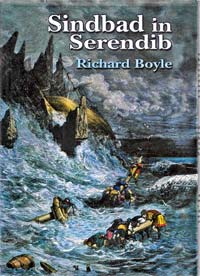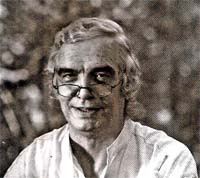|
Book Review
Discovering your own Serendib
Aditha Dissanayake
Warning. If you are not a Southerner you may skip this paragraph. If
you are one, take a deep breath. What you are going to read may take it
away.
“No traveller fresh from Europe will ever part with the impression
left by the first gaze upon tropical scenery as it is developed in the
bay and the wooded hills that encircle it...There stands the tall
lighthouse, from amid the trees rise the roof and gable of a church, and
surrounding all are the walls of the fortress.
 Behind
these walls and green ramparts, hidden beneath those trees, are the
houses, churches, shops, hotels and clean quiet streets.” You might have
to take another breath if you happen to be born in Galle. Yes, this
description written in the mid-nineteenth century is about home. Behind
these walls and green ramparts, hidden beneath those trees, are the
houses, churches, shops, hotels and clean quiet streets.” You might have
to take another breath if you happen to be born in Galle. Yes, this
description written in the mid-nineteenth century is about home.
If Galle is not exactly your port of call, there are plenty of other
places that would entice you in Richard Boyle’s Sindbad in Serendib.
Here is your ticket back in time to Mulgirigala; to see the rock by
moonlight with John Descamps in 1845.
“The night was clear and serene, the stars shone brightly and the
moon which was nearly full, rising in all its majesty, shed its soft and
silvery light...on the still and lovely scene”. Or to the North Central
Province, to Ritigala Kande, the mountain used as a launching pad by the
warrior monkey god, Hanuman,to jump right back into South India; to
climb it with Boyle and his friend, who are on a mission to check the
place where the battle between King Kasyapa and Prince Mugalan had taken
place, for Lester James Peries’ “The God King”.
Tired of travelling? Sit back and relax. Let your mind dwell on that
“tear drop of an angel that rolled into an oyster”, the magic charm that
wards off evil, the talisman that gives enlightenment to those who hold
it in their hands. Lest you are still wondering, listen to this
conversation between Ibn Batuta and the Arya Chakravarti, the ruler of
Puttalam, in 1344.
“The servants of the king were sorting the precious from those which
were not so. He (Arya Chakravarti) said to me, “Have you seen the pearl
fishery in the countries whence you came?” ‘Yes’ I replied, ‘I have seen
it in the island of Kois and in that of Kech..’I have heard of them’
answered he, ‘Are there at that island any pearls equal to these?’ I
said ‘I have seen none so good!”
|

Richard Boyle |
From pearls to Mermaids. If you happen to go past the Gulf of Mannar
watch out for these beautiful girls, half fish, half human and their
counterparts, the Mermen. Listen carefully and you might hear their
song, so hauntingly beautiful that, as Shakespeare writes in A Midsummer
Night’s Dream, “the rude sea grew civil” upon hearing it.
Though there is a perfect scientific explanation to dispel the
Mermaid as myth, forget it for a moment and agree with Francois Valentyn
who believed that, “as there are such things as “sea-horses, and “sea
trees”, there is no reason to doubt that there may also be “sea-maidens”
and “sea men.”
If you happen to see a close resemblance of the human figure,
“suckling her young,clasping it to her breast with one flipper, while
swimming with the other, holding the heads of both above water”, watch
till she dives suddenly displaying a fish like tale, and call her a
“Mermaid” by all means, even if you know that she is in reality a
dugong. Either way, send a silent prayer for her, for she is, as Boyle
so passionately points out, fast becoming extinct in our waters.
But where is Sindbad? Oh, he is here all right. Telling us, or rather
explaining to the porter who stands outside his mansion wondering why
Sindbad deserves to live in such luxury, with an account of his Seven
Wonderful Voyages. Here is how he describes the view from the Holy
Mountain of Sri Pada. “I had the curiosity to ascend to its summit and
solace myself with a view of its marvels, which are indescribable. Here
are found rubies and many precious things, and rare plants grow
abundantly, with spice trees and cocoa palms.”
Which leads to the word serendipity. Boyle traces the origin of the
word to Horace Walpole who was the first to commit the word to paper
explaining it as the process in which, “They (The Three Princes of
Serendib)were always making discoveries, by accident and sagacity, of
things they were not in quest of”. Centuries later, John Barth in his
book, The Last Voyage of Somebody the Sailor makes Behler, his
protagonist, explain the concept as “You don’t reach Serendib by
plotting a course for it. You have to set out in good faith for
elsewhere and lose your bearings serendipitously.”
Finally, to the last chapter which ought to be read slowly, savoring
every word, wishing it would not end.
But it does. Having traversed the entire length and breadth of the
country you love so much, with companions like C.G Jung, J.B Priestley,
members of the Rodi community and the Nittaewo, and feeling as if
Richard Boyle is your friend, (not the kind you find on Facebook but the
kind you have a chat with, seated in his study with that special photo
of Sri Lanka taken from space in 1966 hanging on the wall) it feels
strange to close the book, look up and realize you are alone.
Alone after a journey filled with serendipitous experiences. Alone
but happy, because “Sindbad” is bound to lead you (as Behler might have
said) to your own Serendib.
[email protected]
|



